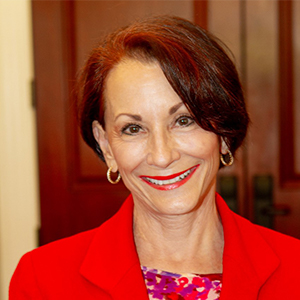If you have been writing grants for a while, you know the plethora of questions funding agencies ask. Some questions that make you pause and consider if you have a response, if it will take some effort to generate the response, or if it needs to have leadership approval and/or staff action. Other questions you may have ready answers for – it will just take a little cutting and pasting from organizational materials. If you are just starting to write grants for your nonprofit, you will learn the more grants you write, the greater the range of questions you will encounter. Whether you are fledgling or a seasoned grant writer, it is paramount you have a story to tell and are not distracted from telling it because of the questions.
No two funding agencies will ask you the same questions. They each have their own focus and priorities and will ask based on these. Your challenge as a grant writer is to answer their questions while ensuring your nonprofit’s story is told. You will encounter grant applications that ask questions you are not motivated to take the time to answer. Other questions you encounter will leave you seeking an answer. Another set of questions will be commonplace, as you have been asked the questions multiple times. The sum of the questions is your opportunity to tell your story from multiple perspectives.
To be successful and minimize frustration, compose a document of your nonprofit story. Your nonprofit leadership should approve it, and you will have at your ready for consistent use in your communications. The story can be any length you prefer but should contain all the essentials: problem, solution, results, nonprofit history, client demographics, financials, and attachments. A shortened version of two pages is often referred to as a case statement. Keep in mind some parts of the story will change with time. You and your leadership should agree on how often the story is updated – annually is the typical timeframe.
Starting with the problem, describe what your community is experiencing, and your nonprofit is addressing. It could be homelessness, food insecurity, academic failure, etc. Describe the problem and impact on the community from the client’s perspective and the implications if the issues are not addressed. Use data from credible sources and document references.
Next, describe your nonprofit’s solution that includes mission, vision, programs, and partnerships. Keep in mind granting agencies are interested in funding nonprofits who are not duplicating the programs/mission of other nonprofits. They are interested in funding nonprofits that maximize, through partnerships, the services and programs of other nonprofits to enrich the clients’ experience. Describe in your story how community volunteers help in accomplishing the mission. Establish your nonprofit’s credentials identifying your nonprofit’s awards (Great Nonprofits badge, GuideStar badge, Charity Navigator rating, United Way partnership), and certifications.
Your solution should also include a description of your nonprofit’s strategic plan. Let the grant reader know the nonprofit is committed to the mission over the long-term. This is a question you will be asked on some, but not all grant applications. If you don’t have a strategic plan, ask your leadership to begin the process, as it takes time to develop.
Having addressed the problem and the solution, your nonprofit results are the bottom line to whether you will be approved for a grant award. Your story should include outputs (number of clients served, number of services offered), and outcomes (impact your programs/services had on the clients over the past year). Logic models are excellent tools for capturing the depth and breadth of program information. A programmatic logic model includes resources needed to execute the program, timeline and outputs for the program, annual goals for the outputs, and finally the anticipated impact on the clients and community over the long term. Many granting agencies will ask you to describe the tools your nonprofit uses to measure outcomes and how often the outcomes are measured. A best practice for nonprofits is to include measurements from multiple perspectives: clients, parents of clients, teachers of clients, volunteers, and staff.
An important data point to have available is the cost of the program per client. A high cost per client and/or low number of clients served is going to be a red flag to the funding agency. Look at similar models to your nonprofit and gauge whether your nonprofit is comparable with costs. Other data to include are administrative and program costs. The more revenue directed to fund programming the better.
Most granting agencies will want to know your client demographics. Some will want statistics, others will ask for verbiage, some will want both. This is your opportunity to pull at heartstrings with details, beyond the numbers, about the clients you serve. Capture client testimonials to share the needs they have and the challenges they have overcome with the support of your nonprofit. It is important to keep a database of client demographics (age, gender, race, ethnicity, income, zip codes) so the statistics are available to include in your story.
Financial information can be rather dry in reporting, but use it again to tell your story. Consider including growth of revenue over a specified time frame. Consider how your revenue sources have changed or will be changing. This indicates to the granting agency that your nonprofit is growing and experiencing a range of support. Always include information about your annual audit (if required) and findings. Describe your nonprofit’s financial process: budget is developed annually and approved by the Board of Directors, financial statements completed by a CPA, Board reviews regularly to track actual revenue and expenses to budget projections, IRS form 990 completed annually by CPA, and Board members make annual donations to the nonprofit.
Grant writing is similar to completing a crossword puzzle – you are looking for key words the funding agency wants to read, and you are oftentimes character or word constrained. Your goal is to tell the story within those constraints. If you can’t tell your story to your satisfaction within the constraints, consider attachments. Many granting agencies will allow you to include attachments – annual reports, case statements, client testimonies, and/or logic models are excellent choices.
Your challenge is to focus on telling your nonprofit story using as much of this information as you can in each grant you write. Your story, well-told, contains a considerable amount of information that is inspiring. Having your story composed, and annually updated, will make grant writing easier and more successful.
Do not be distracted from telling your story because of the range of questions you are being asked. Be creative, focused, and prepared. The more grants you write, the better you will become at telling your nonprofit story.





